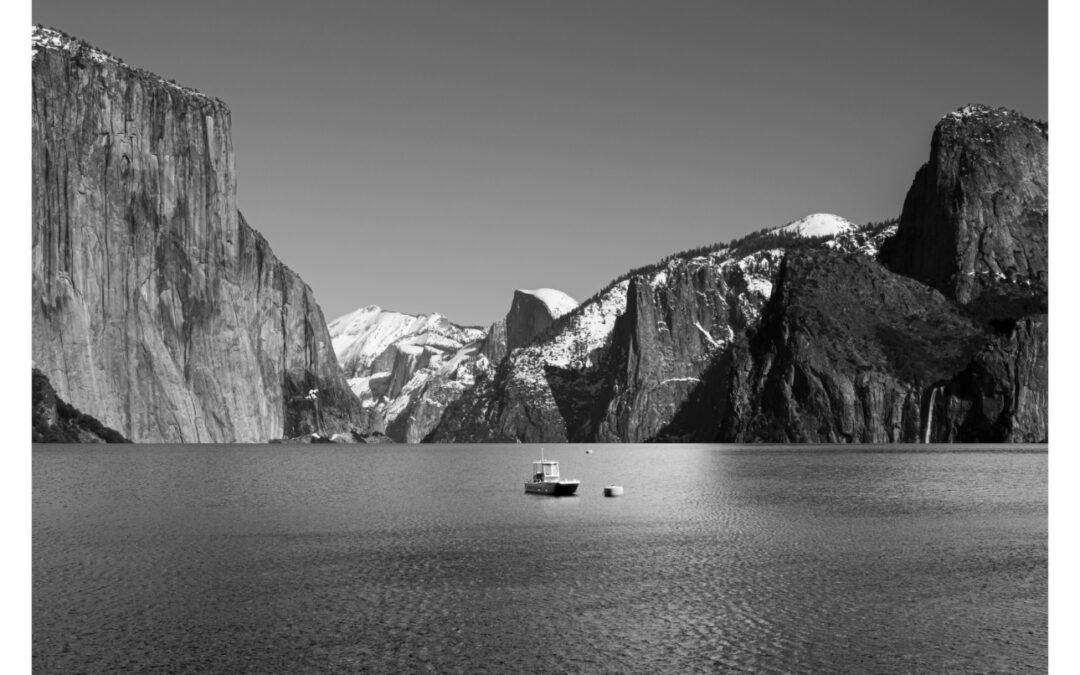
by Spreck | Jun 6, 2025 | Uncategorized
Our Spring 2025 Newsletter has been delivered to mailboxes is also posted online here.
If you would like a printed copy but have not received one, please send your name and address to admin@hetchhetchy.org.
The Newsletter includes:
Improvements to Access We are continuing to pursue improvements to the visitor experience at Hetch Hetchy – even while the dam is in place. San Francisco made substantial promises and Congress expected that park visitors would be able to camp, fish and explore the canyon by boat. We hope cooperative discussions with the National Park Service and Department of the Interior will produce results. We believe, however, that the current regulations violate the Raker Act (the 1913 legislation that allowed the valley to be dammed) and are considering asking the federal court for relief.
When park visitors are able to fully appreciate Hetch Hetchy and learns its history, most will support returning the valley to its natural splendor.
Ackerson Meadow The restoration at Ackerson, not far from Hetch Hetchy, is inspiring. See the Newsletter, or better yet, check it out in person.
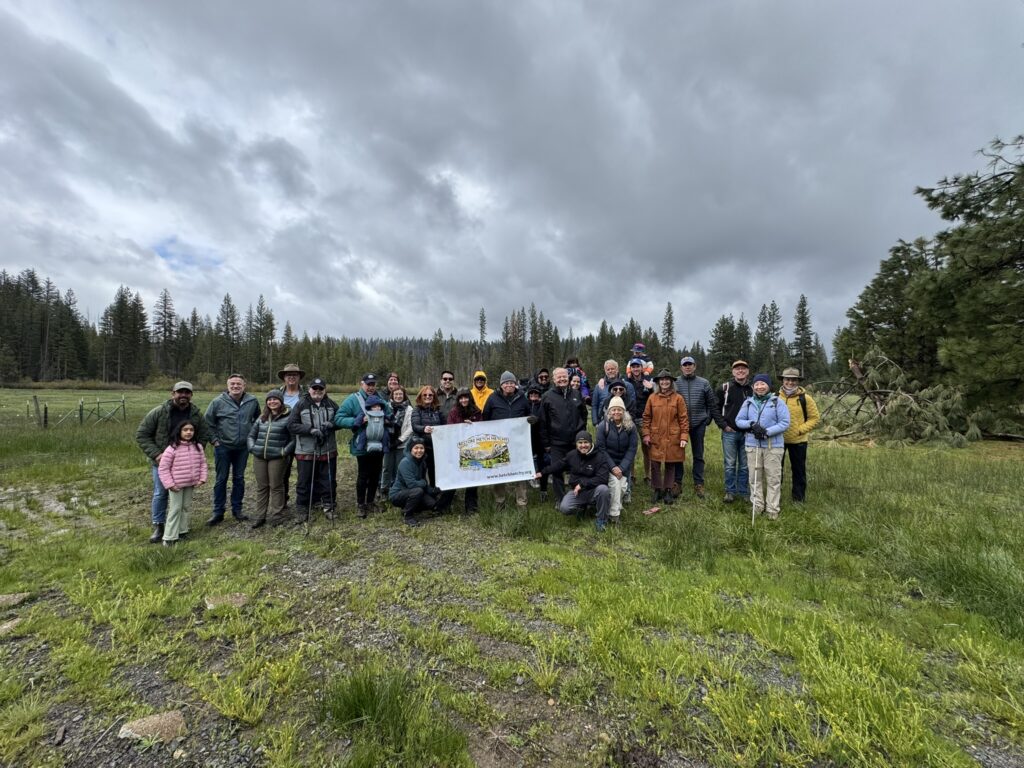
Robel Fessehatzion Art We are excited to share Robel’s “A Tale of Two Valleys” image, which elicits the horrific sensation we would get if Yosemite Valley were to be dammed and flooded.
Robel is a talented, passionate and articulate artist. It’s great to have Robel’s voice on our side. (He’s planning on going back to Hetch Hetchy soon.)
Check out Robel’s website to see more of his outstanding work. Think about where one of his pieces might hang in your home.
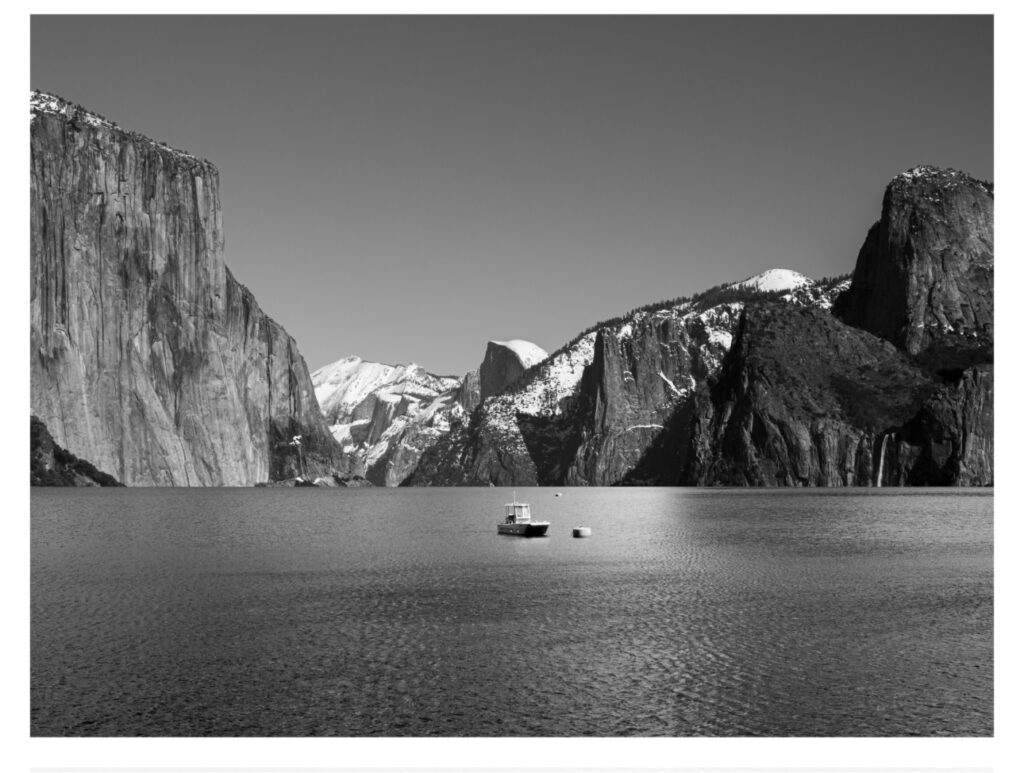
Robel Fessehatzion is a self-taught African-American photographer and a member of the African diaspora (Ethiopia) based in the San Francisco Bay Area. Influenced by his upbringing near the foothills of the northern Sierra, his work focuses on the natural environment & identity.
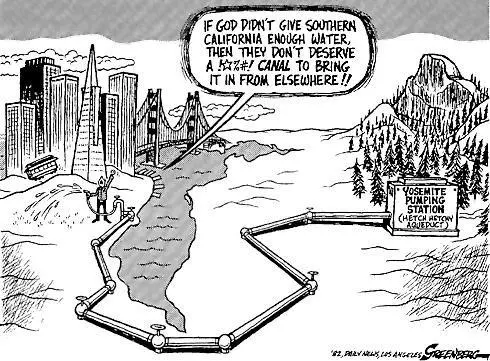
by Spreck | May 23, 2025 | Uncategorized
The House of Representatives passed President Trump’s “Big, Beautiful Bill” on Thursday by a single vote. It heads to the Senate where some say there will be a “Big, Beautiful Rewrite”. The bill has enormous implications for government spending and revenue that will affect all Americans.
Commentary herein will stick to Restore Hetch Hetchy’s extended wheelhouse – land and water in the west.
An earlier version of the bill had included a provision to sell 500,000 acres of federal land in Nevada and Utah. Thanks to bipartisan opposition, led by Congressmembers Zinke (MT) and Vasquez (NM), this provision has been eliminated.
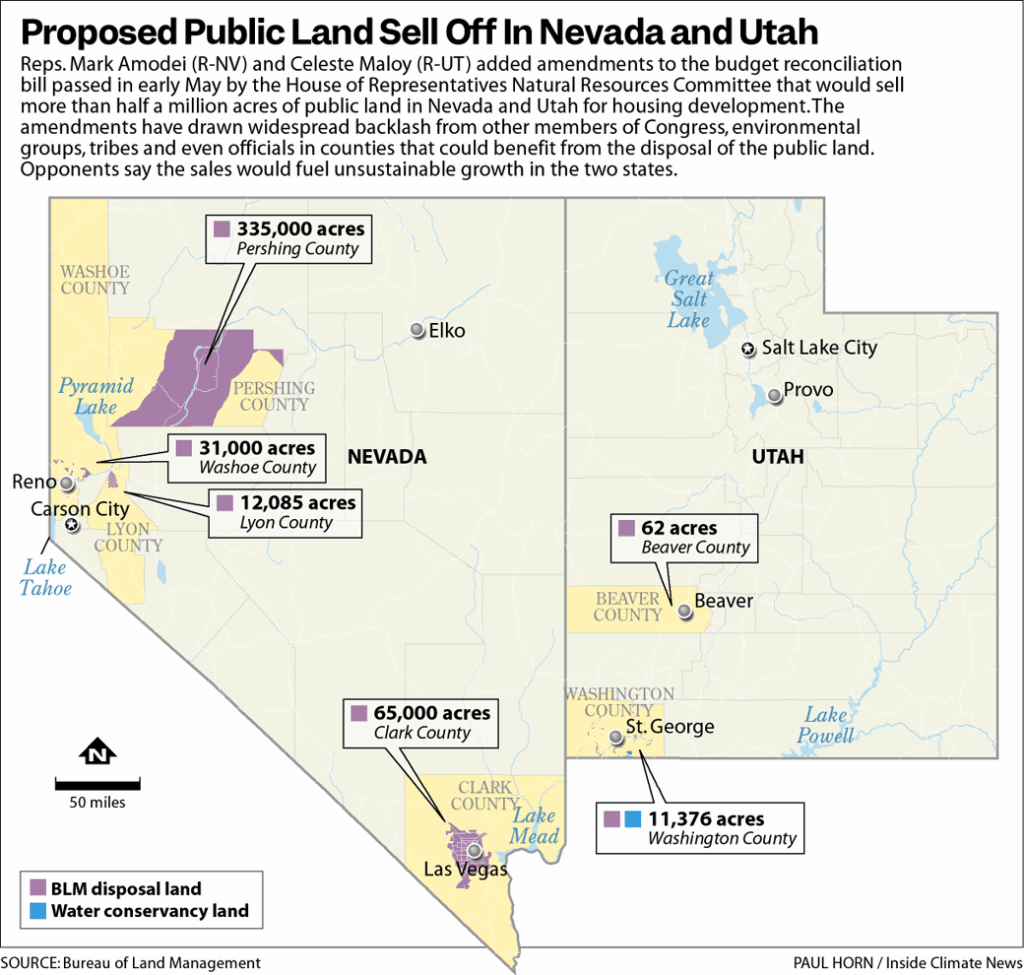
Nevada’s Rep. Amodei wanted to sells lands within Nevada. Nevada’s other three Representatives joined the Public Lands Caucus in opposition.
The “Big, Beautiful Bill” also includes $2,000,000,000 to enlarge Shasta Dam & Reservoir and $500,000,000 to help fund tunnels to move water from north to south around the Delta in California. These projects are deeply controversial for both environmental and economic reasons.
There is substantial opposition to enlarging Shasta Dam. The extended reservoir would flood lands belonging to the Winnemem Wintu tribe as well as a stretch of the McCloud River that is well known for trout fishing and which is presently protected by the California Wild and Scenic Rivers Act.
The Delta Tunnels project is the latest incarnation of the longstanding proposal to convey water around California’s Delta as it travels from the wetter north to farmlands and cities in the south. Moving water around, rather than through, the Delta was originally proposed in the 1940s and was defeated as the Peripheral Canal on California’s ballot in 1982. But the idea has not gone away.
Proponents allege that the Delta, with its below-sea-level islands fortified by levees, is vulnerable to sea level rise and catastrophic failure which would put much to the State’s water supply at risk. Governor Newsom agrees and is trying to fast track permitting.
Opponents refute the claims of imminent failure and assert the levees should be strengthened. Moving water through the Tunnels would dewater the Delta and destroy the largest estuary on the west coast of the Americas.

A 1982 Los Angeles Times editorial cartoon mocks San Francisco’s opposition to the Peripheral Canal. (Restore Hetch Hetchy has no problem with San Francisco’s pipeline – only that it uses Yosemite as a storage tank.)
Beyond the dispute pitting environmental impacts against water supply benefits inherent in these two projects, there is a fundamental economic principle at stake – “user pays”. As they teach in Econ 101, when the price for something is artificially depressed, its demand increases.
Naturally, Central Valley Project farmers, the principal beneficiaries of enlarging Shasta, would like more water – especially if they don’t have to pay for it. Farms in California’s San Joaquin Valley are some of the most productive in the world. Subsidizing infrastructure to store and deliver water, however, skews decision-making away from protecting fisheries and other environmental resources. (The original construction of the Central Valley Project, including Shasta, Trinity, Folsom and New Melones Reservoirs as well as the Delta Mendota Canal, was subsidized – irrigation districts were awarded interest loans with zero interest that have yet to be repaid.)
Paying for the Delta Tunnels is likely to be a different story. $500,000,000 is only 2.5% of the total estimated cost of $20,000,000,000. Most of that total cost would be borne by people living in southern California. Environmental considerations aside, could/should they invest funds in other projects instead, even if they believe catastrophic Delta failure may well occur?
San Francisco did not receive any substantial federal or state funds for construction of Hetch Hetchy, Cherry & Eleanor Reservoirs or for its pipelines and tunnels conveying water to the Bay Area. The City did, however, receive a massive subsidy – the Raker Act allows it to “rent” Hetch Hetchy Valley for only $30,000 per year! That subsidy has worked out pretty well for the City. We don’t like to put a price tag on Yosemite, but if San Francisco had had to pay anything close to market price, it would likely have decided to go elsewhere for water or perhaps would have built all of its dams in the Tuolumne watershed outside of Yosemite National Park.
Put another way, Yosemite’s Hetch Hetchy Valley would never have been dammed and flooded if Congress had stuck to basic economic principles.
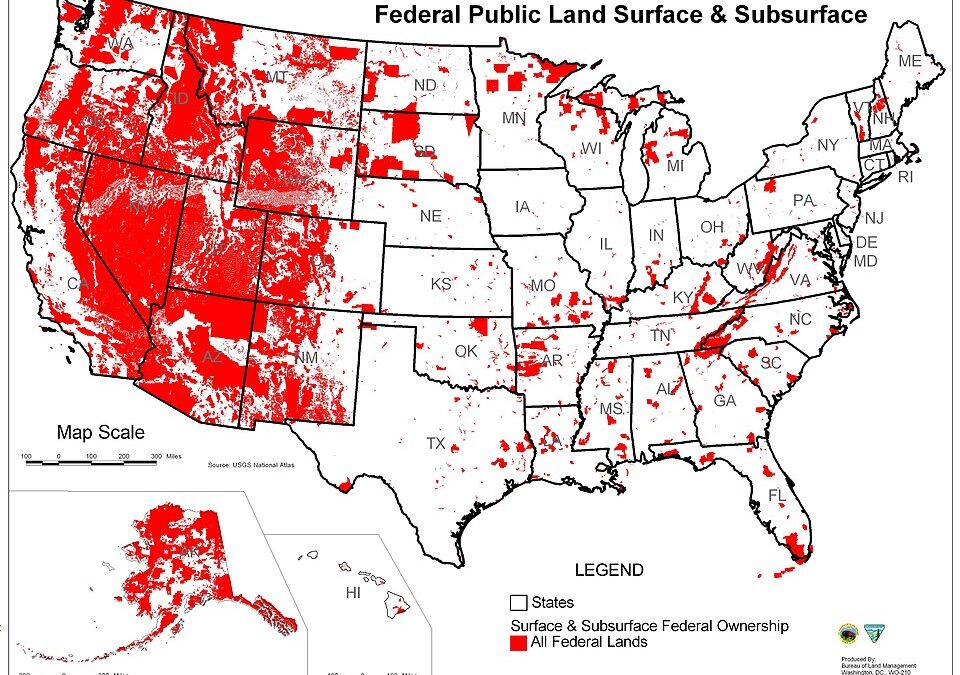
by Spreck | May 17, 2025 | Uncategorized

Federal lands across the United States, colored by managing agency – click map to enlarge.
The damming and flooding of Hetch Hetchy in Yosemite National Park looms large in American history as arguably the most infamous loss of public land ever. Returning that spectacular landscape to its natural splendor will not only undo a historic injustice, it will inspire a new generation to cherish, protect and restore public lands everywhere.
Hetch Hetchy, as a glacier carved valley with waterfalls cascading from granite monoliths onto a meadowy valley floor, is special indeed. It is not, however, large. At 1400 acres, it is only about 2/10 of 1 percent of Yosemite (though the reservoir effectively reduces access to the Grand Canyon of the Tuolumne.)
Moreover, national parks cover some 85,000,000 acres. Together with lands managed by the Bureau of Land Management, U.S. Forest Service and other agencies, federal lands comprise more than 588 million acres – or about 1/4 of all land in the United States.
These public lands are important to all of us. As citizens we own them. No one is making any more. Any decision to sell public lands should be considered with the utmost care and deliberation.
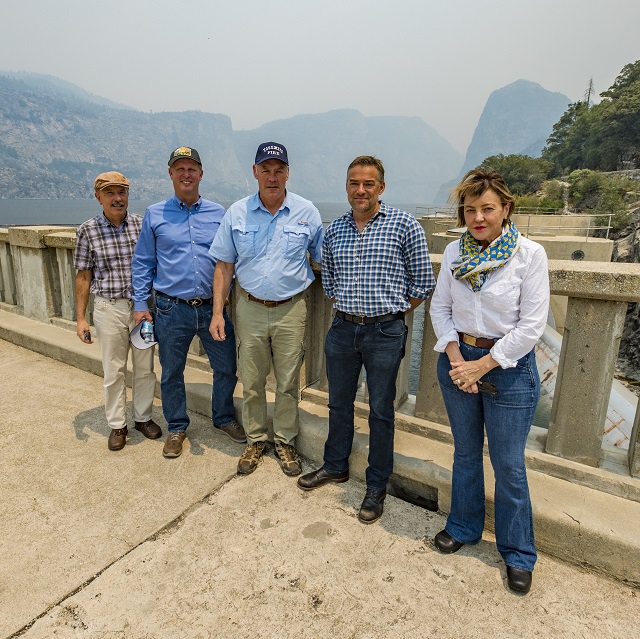
As Secretary of Interior in 2018, now Congressman Zinke (center) visited Hetch Hetchy with, from left, RHH board member Mark Palley, Executive Director Spreck Rosekrans, and board members Mark Cederborg and Virginia Johannessen. (Sadly Hetch Hetchy was largely obscured by smoke that day.)
Earlier this month, however, Congress members from Utah and Nevada proposed and the House Natural Resources Committee passed an amendment to sell federal land in their states. The amendment is part of the larger budget reconciliation bill, so there is danger that the public lands could be sold without any real debate.
Fortunately, a bipartisan group of Congress members, led by Ryan Zinke (R-Montana) and Gabe Vasquez (D-New Mexico) has launched Public Lands Caucus, a bipartisan congressional coalition focused on conserving America’s public lands and expanding access for all Americans. As Rep. Zinke notes, “Public lands aren’t red or blue issues, it’s red, white and blue. The bipartisan Public Lands Caucus brings together lawmakers who don’t agree on much, but we agree on and are ready to work together to promote policies that advance conservation and public access … so future generations can enjoy the same opportunities to hunt, hike, fish, make a living and enjoy our uniquely American heritage.”
It’s refreshing to see any bipartisan cooperation these days. As an organization deeply connected and committed to improving America’s natural heritage, Restore Hetch Hetchy applauds this effort.
Cross our fingers, but also write your representative to oppose the sale of federal lands.
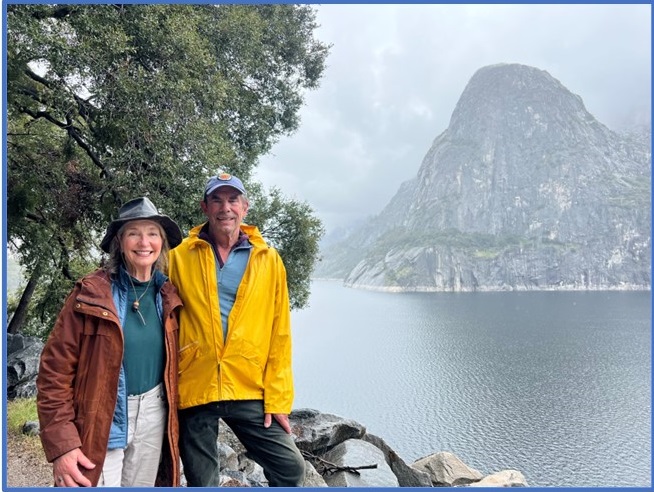
by Spreck | May 4, 2025 | Uncategorized
Last weekend the Restore Hetch Hetchy Board and numerous supporters celebrated Earth Day with a short trip to (where else?) Hetch Hetchy. On Saturday, after a morning board meeting, we toured the newly restored Ackerson Meadow and enjoyed an evening reception at the Evergreen Lodge. On Sunday, we went to Hetch Hetchy and out to Wapama Falls.
The weather was a bit dicey, but the cold rain and snow held off (mostly) as we explored Ackerson and sauntered along the trail at Hetch Hetchy. (‘Twas John Muir who preferred “saunter” in replace of “hike” as a reminder that our time in these spectacular landscapes in to be cherished, not endured.)

John Muir leading an outing to Hetch Hetchy in 1909: “Now these mountains are our Holy Land, and we ought to saunter through them reverently, not ‘hike’ through them.” Photo: University of the Pacific
Simply put, our weekend at Hetch Hetchy was wonderful. A beautiful trip in the mountains, time for political strategizing with the board, and being inspired by long-time supporters and new friends alike. If you haven’t been to Hetch Hetchy, please go. It is spectacular year-round, but it is kind of special when you can avoid the crowds.
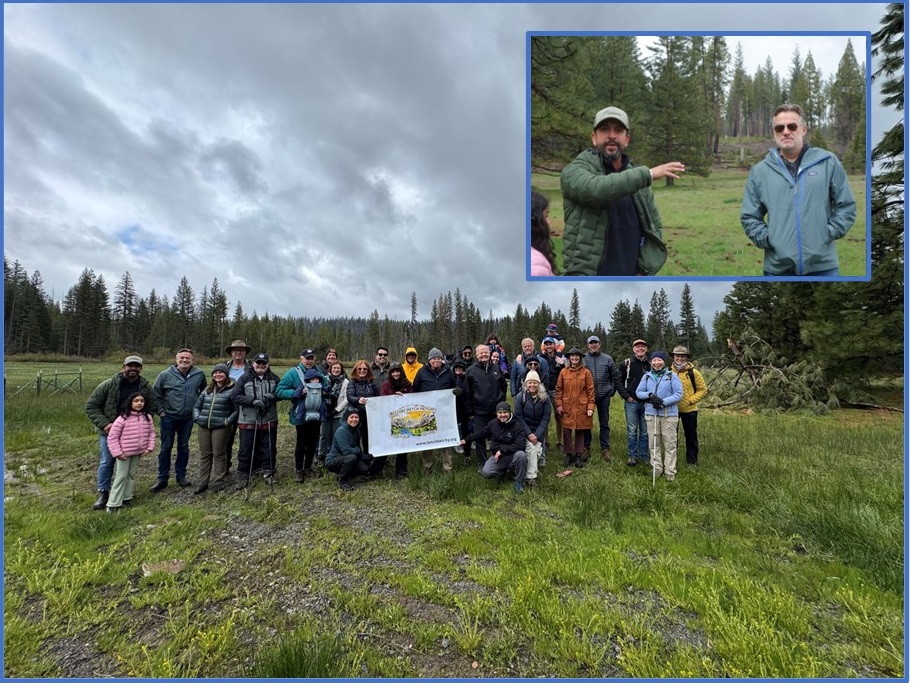
Restoration Superintendent Frank Perez and board member Mark Cederborg explained the restoration process at nearby Ackerson meadow which had been destroyed by cattle grazing. Similar expertise will be employed when Hetch Hetchy Valley is restored – much of which will again be a meadow.
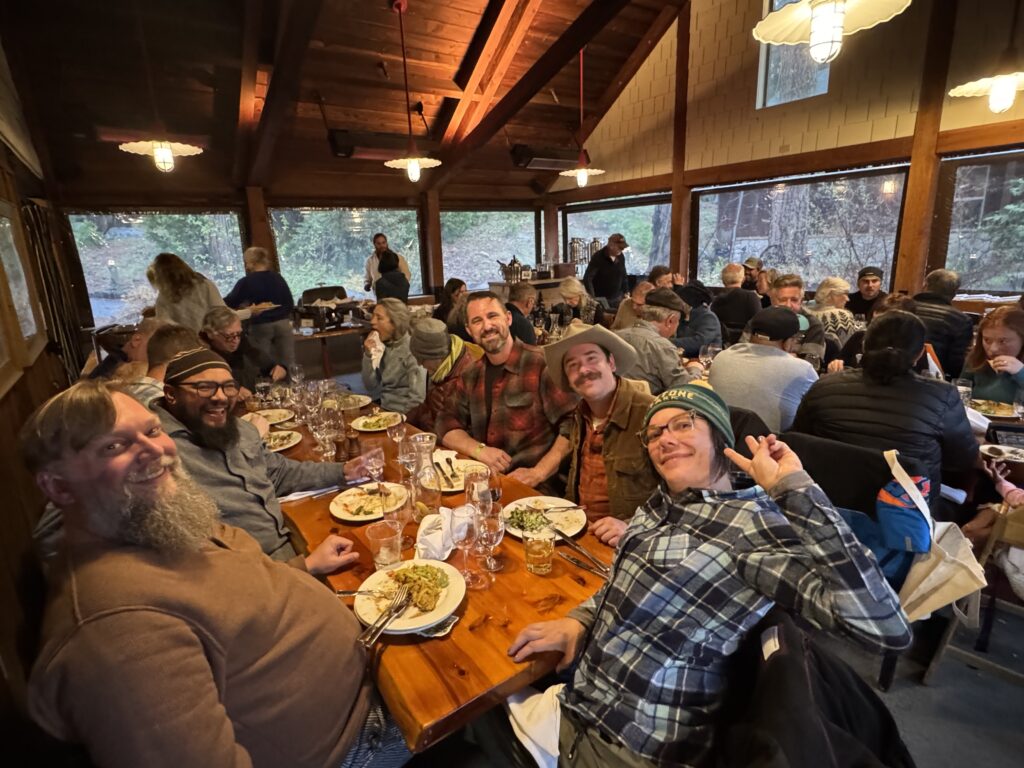
New and old friends joined us for a yummy buffet at the Evergreen Lodge.
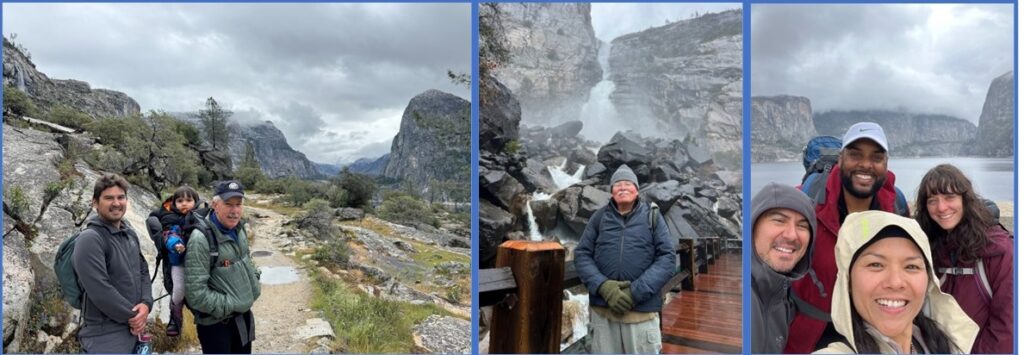
Great to be sauntering along the trail with friends.

The only this wrong with this picture? That darned reservoir where a serene valley is supposed to be!

by Spreck | Apr 21, 2025 | Uncategorized
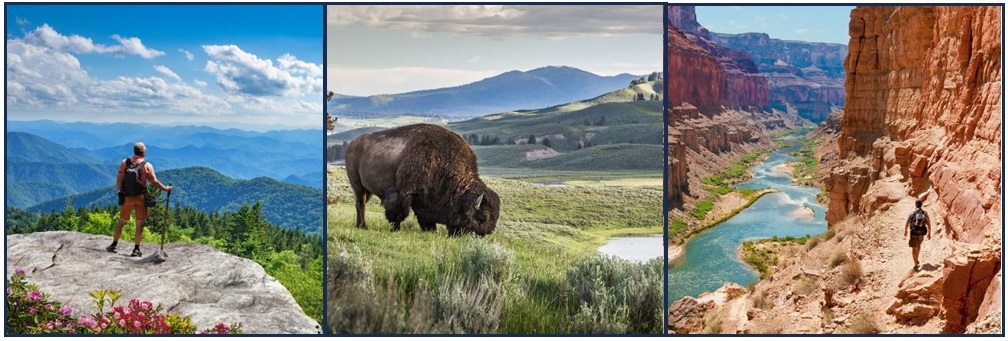
Yosemite. Yellowstone. The Grand Canyon. The Great Smoky Mountains, and so many more.
It’s hard to imagine the United States of America without our national parks. But in the late 19th century, preserving public land in its natural state was a new and provocative idea. It was also too late for many European countries, whose lands had already been fully developed.
It all started when President Abraham Lincoln signed legislation to preserve Yosemite Valley in faraway California for “public use, resort and recreation … inalienable for all time.” Shortly afterward, Yellowstone National Park was created — our nation’s, and the world’s, first wilderness park. Yosemite, Sequoia, Mesa Verde, and Mount Rainier came soon after.
In the early 20th century, we took one huge step backward. San Francisco, in the wake of the 1906 earthquake and fire that devastated the city, campaigned to build a dam in Yosemite’s Hetch Hetchy Valley, one of two iconic glacier carved valleys in the park. More than 200 newspapers nationwide rose in opposition to the idea that a single municipality could take over land that had been “preserved in perpetuity” for all Americans. After extensive and contentious deliberation, however, Congress passed and President Woodrow Wilson signed the Raker Act allowing the dam to be built and Yosemite’s Hetch Hetchy Valley to buried beneath a reservoir.
In 1916, Congress, reflecting on the unprecedented groundswell of public opposition that had taken place during the debate over the Raker Act, passed the National Park Service Act — a law intended to prevent, in large part, any more such intrusions. Subsequent proposals to build dams in Yellowstone in the 1920s and the Grand Canyon in the 1950s were defeated. And while threats to and controversies within our national parks continue, no destruction approaching the scale of damming Hetch Hetchy has since been allowed.
Since that time, the conservation movement has evolved and grown enormously –- fighting ever wider battles to protect the natural world and create a sustainable economy. Today, conflicts over public land extend far beyond our national park system and are often fought over urban parks as well as wilderness areas.
In the 1960s, Rachel Carson’s Silent Spring alerted us to the fact that “better living through chemistry” was very often not so. Shortly thereafter, environmentalists joined forces to effect a nationwide ban on DDT.
In 1969, a horrified nation watched Ohio’s Cuyahoga River catch fire, and political pressure persuaded President Richard Nixon to sign the Clean Water Act. Nixon also signed the Clean Air Act and the Endangered Species Act.
Today, much of the conservation movement is consumed with local, national, and international efforts to stop Earth’s atmosphere from warming due to the combustion of fossil fuels.
Conservation is now integrated in virtually every aspect of our lives. We recycle, and conserve energy and water. We subsidize public transportation and dedicate highway lanes to carpools. We regulate forestry and commercial fishing so that the world our grandchildren will inherit will look like the one we know now — or perhaps even a bit better.
Even as the conservation movement has become so many different things, our national parks are still the envy of the world. Visit them and you will find not only a plethora of your own countrymen, but citizens from countries around the world, many of which did not have the foresight to preserve some of their own very special places.
Still, Hetch Hetchy remains the greatest blemish in our national parks. In 1913, our nation’s lawmakers made a grave mistake. But it can be reversed. Restore Hetch Hetchy is resolved to undo that mistake, and we invite all our fellow citizens to join us in making Yosemite National Park whole again.
— This blog is adapted from a column RHH board Chair Roger Williams wrote on the centennial of the Raker Act’s passage. Restore Hetch Hetchy is celebrating Earth Day with a meeting and public retreat at Hetch Hetchy.















